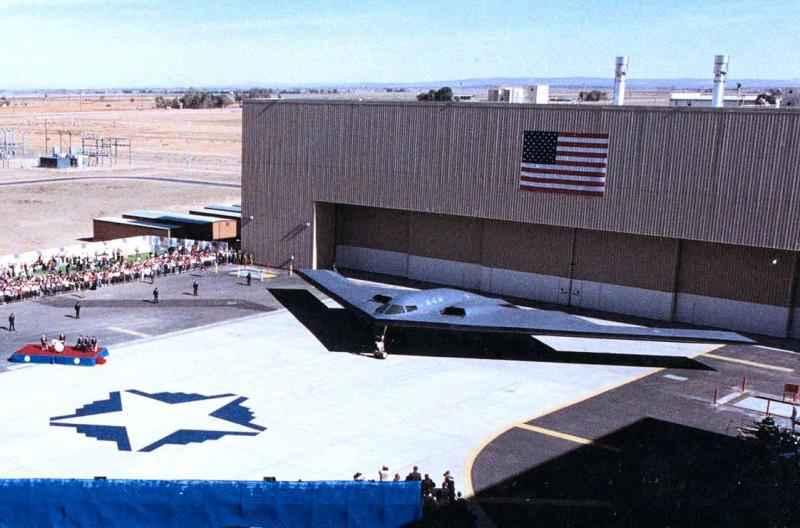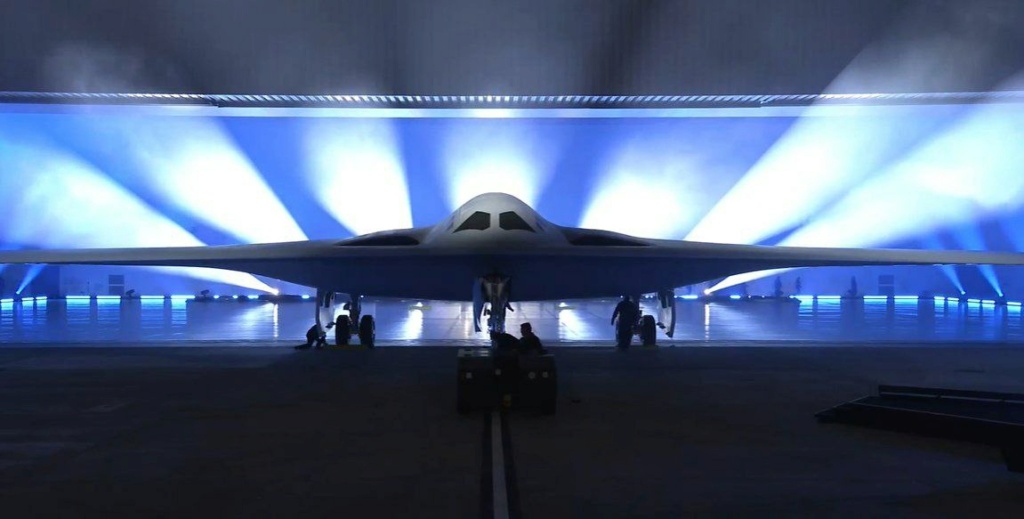A flying wing design in and of itself is a good idea... very good aerodynamically and very efficient in terms of drag so for a given engine thrust it can stay in the air longer and therefore fly further.
Not such a good idea if you want to fly directly over the targets you are attacking unless the opponent is particularly weak and undefended, but as a stand off cruise missile carrier the flying wing stealth design has a number of advantages.
If you want to fly over your targets then your stealth likely wont hide you which means you need to fly low which exposes you to standard ground fire and extra stresses of flying through thicker wetter air.
First of all if your weapons are 5,000km range Kh-102 nuclear armed missiles then the stealth and efficient airframe shape means you can fly all the way to your launch points at medium to high altitude for low drag, low stress on the airframe, and highest subsonic speed with minimum thrust requirement.
The long range of your standoff missiles means the enemy likely wont even know you were there and the efficient shape means you are actually rather stealthy without any expensive technology... the flying wing shape is naturally stealthy so some RAM and careful design and it should be rather good... the larger the pieces you make the plane out of the fewer the joints which further improves stealthiness and strength allowing more fuel and weapons payload.
Next gen standoff weapons will likely be hypersonic and of strategic flight range in themselves... the Russians are working on Mach 12, 12,000km range missiles that are 11m long that should fit into the Tu-160 and PAK DA easily enough (by design of course).
In terms of operational costs a flying wing should be the simplest and cheapest plane, it is subsonic and with no swing wing complication should be as cheap to run as a Bear which is essentially also a flying wing... but with a fuselage attached to carry fuel and people and weapons...
If you have a look at the Tu-160 it is mostly a flying wing too really... with a nose and a tail sticking out to increase RCS from the sides...
A stealthy flying wing makes sense, as long as it uses standoff weapons on strategic missions and has protection on theatre missions (self defence AAMs have already been confirmed for it).
Tu-95 and b52 aren't safe even with 2000km range stand off weapons. Oth radar + awacs + Mig 31 range + r37 range make their interception possible.
The critical factor is that the B-52 and Tu95 are subsonic and so by the time they get to their launch positions for their long range cruise missiles each sides ICBMs and SLBMs have already ravaged both defending countries... the idea that the air defences of both countries will be fully intact and waiting is a bit of a stretch.
Both aircraft also carry what are called short range attack missiles... the Soviet missile was the Kh-15 which is a 300-400km range rocket powered missile that moves at mach 5 and was designed to explode at a coordinate... either on the ground or in the air. The idea is that as you approach your launch position, if you detect enemy radar in the air or on the ground or at sea the very large radars of the bombers are used to scan the airspace and sea or ground surface for SAMs or fighter interceptors and a Kh-15 is launched set to detonate amongst the group of interceptors or interceptor, or the ship or ground base SAM site to obliterate it in a rather powerful nuclear blast.
There was a lot of speculation about a mach 5 conventionally armed Kh-15 for use against SAM sites and major radar stations and also ships, but that mach 5 missile turned out to be the Kh-32 upgrade of the Kh-22M... the Kh-15s were withdrawn because they only ever had a nuke payload and as such could not be justified.
The talk about very long range Air to Air missiles being useful but very inefficient and designing a long range missile like an R-37M to have multiple small independent missiles that could be released as they approached their targets would likely be used by bombers too where enemy interceptors and any missiles they might have launched could be engaged from large distances... so you launch an R-37M at 400km range and the missile scans for targets on its way to the enemy fighter or group of fighter or enemy bomber... any small targets detected on the way like already launched missiles (AAM or cruise) releases a separate interceptor missile from the R-37M to engage it. If it doesn't meet anything on the way when it gets to the target area with enemy interceptors or bombers each intercepting munition could target a separate aircraft so instead of launching 6 R37Ms to engage 6 targets, you might launch one that delivers 6 interceptors that can then spread out and each take on its own target... rather more efficient.
Keeping in mind that the R-37M uses a lofted trajectory for long range engagements so it would have climbed to rather high altitude and so those 6 separate interceptors would be released at high altitude and come screaming down on their targets at rather high speed (mach 4-5 plus) and also as they dive on their targets they would be scanning for them with IIR and ARH seekers from the top down making even quite stealthy targets easier to detect. The added bonus is when interceptors are going out to get some bombers those pilots are not going to be looking up much, so intercepting missiles screaming down at near hypersonic speeds will be a surprise...



 lyle6
lyle6




